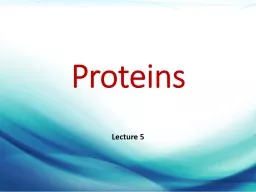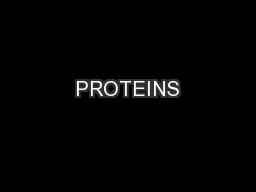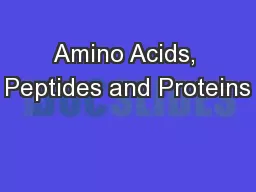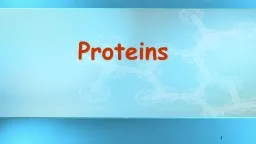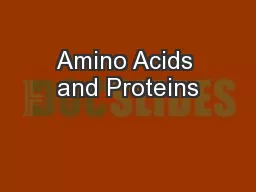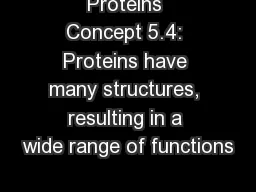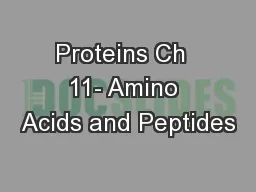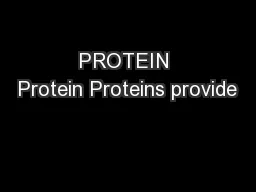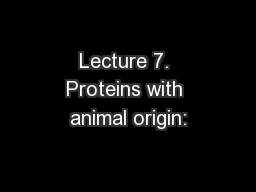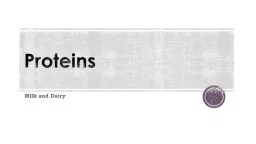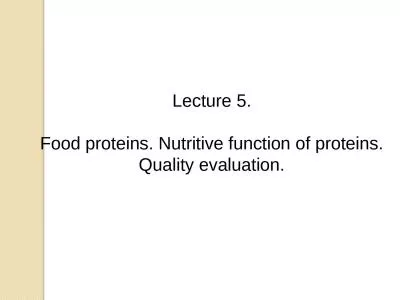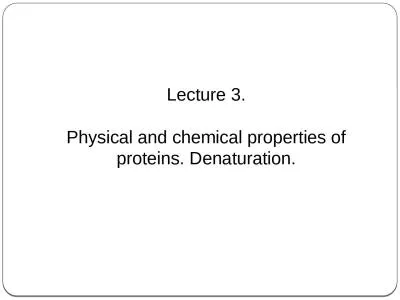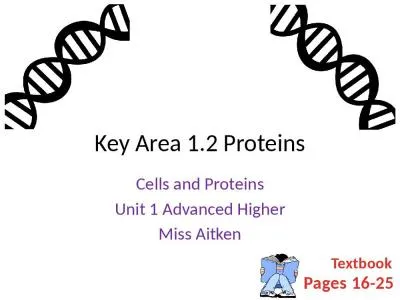PPT-Proteins Lecture 5 Introduction
Author : riley | Published Date : 2022-02-10
Proteins are polymers of amino acids produced by living cells in all forms of life A large number of proteins exist with diverse functions sizes shapes and structures
Presentation Embed Code
Download Presentation
Download Presentation The PPT/PDF document "Proteins Lecture 5 Introduction" is the property of its rightful owner. Permission is granted to download and print the materials on this website for personal, non-commercial use only, and to display it on your personal computer provided you do not modify the materials and that you retain all copyright notices contained in the materials. By downloading content from our website, you accept the terms of this agreement.
Proteins Lecture 5 Introduction: Transcript
Download Rules Of Document
"Proteins Lecture 5 Introduction"The content belongs to its owner. You may download and print it for personal use, without modification, and keep all copyright notices. By downloading, you agree to these terms.
Related Documents

